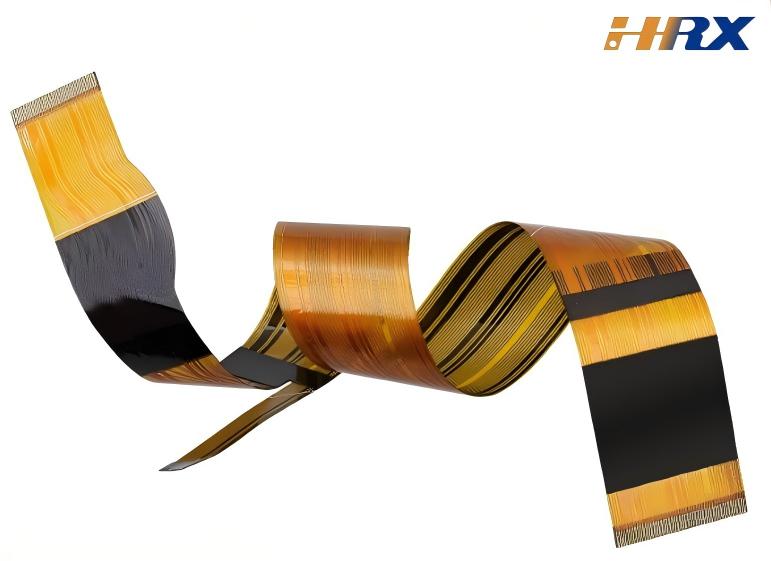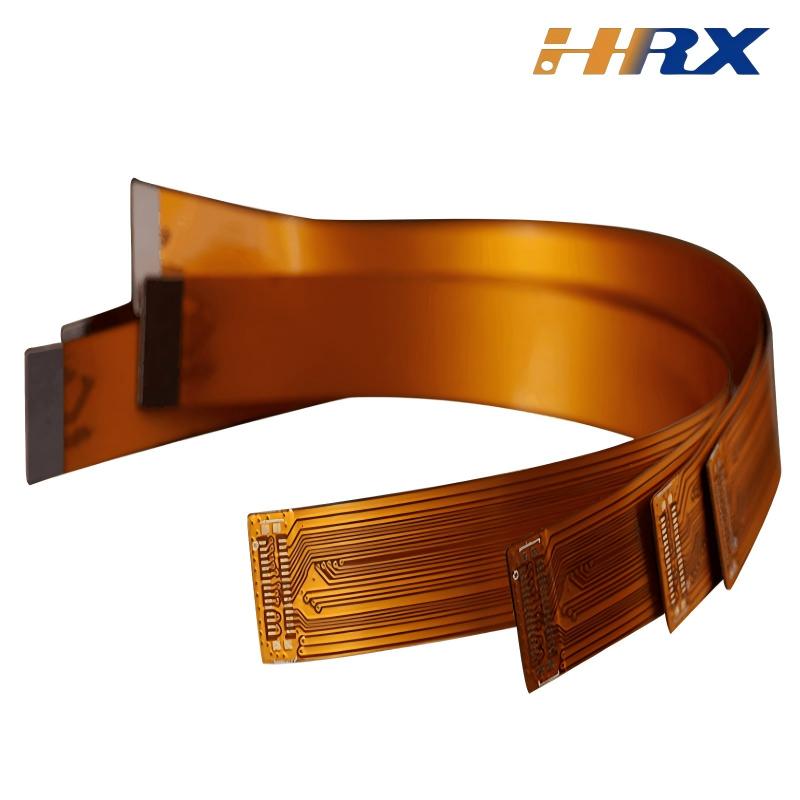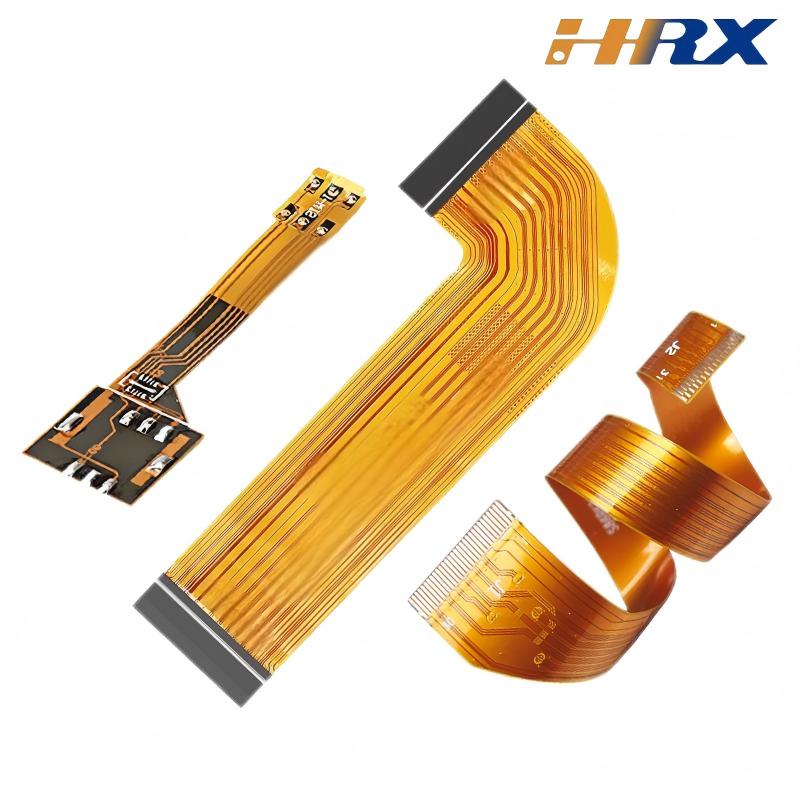Search
How to Achieve Impedance Control in FPC Circuits?
- Jun 10,2025
-
Share
Impedance control is a critical aspect of Flexible Printed Circuit (FPC) design, directly impacting signal integrity in high-speed applications (e.g., USB 4.0, HDMI 2.1, 5G modules). Proper impedance matching minimizes signal reflections, crosstalk, and power loss, ensuring reliable data transmission. Below is a detailed breakdown of the key strategies and technical considerations for implementing impedance control in FPCs.

1. Fundamental Principles of Impedance in FPCsImpedance (Z₀) in FPC
traces is determined by the transmission line model, which depends on:
Trace geometry: Width (W), thickness (T), and spacing (S).
Dielectric properties: Relative permittivity (εᵣ) and loss tangent (tanδ) of the substrate (e.g., Polyimide, LCP, PTFE).
Reference plane: Proximity to ground/power planes (affects the return path for signals).
The primary types of impedance-controlled traces in FPCs include:
Single-ended impedance (e.g., 50Ω for general digital signals).
Differential impedance (e.g., 100Ω for differential pairs like USB or LVDS).
2. Key Design Steps for Impedance ControlStep
1: Material Selection for Dielectrics and Conductors
Dielectric Substrates:
Polyimide (PI): Standard for most FPCs (εᵣ ≈ 3.5–4.0, suitable for <10 GHz).
Liquid Crystal Polymer (LCP): Low εᵣ (~2.8–3.2) and tanδ (<0.003), ideal for high-frequency applications (10–20 GHz).
PTFE (Teflon): Ultra-low εᵣ (~2.1) and tanδ (<0.001), used in microwave/mmWave FPCs (>20 GHz).
Copper Foil:Smooth-surface foil (e.g., RT/RT or VLP copper) reduces skin effect at high frequencies.
Thickness impacts trace resistance (e.g., 18μm foil for low-power signals, 35μm for high-current paths).
Step 2: Trace Geometry OptimizationSingle-Ended Trace Calculation:
Use the microstrip model (trace on surface with single reference plane) or stripline model (trace between two planes):\(Z_0 = \frac{87}{\sqrt{\varepsilon_r + 1.41}} \cdot \ln\left(\frac{5.98h}{0.8W + T}\right)\)
(h = dielectric thickness, W = trace width, T = copper thickness)
Differential Pair Calculation:
For edge-coupled differential pairs:\(Z_{diff} = 2 \cdot Z_0 \cdot \left(1 - 0.48e^{-0.96(S/W)}\right)\)
(S = spacing between traces, W = trace width)
Design Tools:
Use EDA software (e.g., Allegro, PADS, ADS) with built-in impedance calculators or standalone tools like Polar Si8000 to simulate trace dimensions.
Step 3: Layer Stack-Up DesignMulti-Layer FPC
Structure:Ensure consistent dielectric thickness between traces and reference planes.
Example stack-up for a 4-layer FPC:
LayerMaterialFunction1PI + CuTop signal layer (microstrip)2PIDielectric3CuGround plane4PI + CuBottom signal layer (stripline)
Avoid Vias in High-Speed Traces:
Vias introduce inductive discontinuities. Use back-drilling or blind/buried vias to minimize impedance mismatches if vias are unavoidable.
Step 4: Manufacturing Process Control
Dielectric Thickness Tolerance:
Maintain tight control over laminate thickness (e.g., ±5% for PI films) during lamination.
Etching Precision:
Use plasma etching or dry film photoresist for high-resolution trace widths (tolerance: ±10% for <50μm traces).
Impedance Testing:
Post-fabrication, measure impedance using a TDR (Time-Domain Reflectometer).
Compliance with IPC-6012 Class 3 standards (±10% for single-ended, ±8% for differential impedance).
3. Common Challenges and Mitigation Strategies
ChallengeRoot CauseSolutionImpedance VariationInconsistent dielectric thickness or trace widthUse automated laser profiling for dielectric layers; optical inspection of traces.High-Frequency LossSkin effect in rough copper foilSwitch to very low profile (VLP) or reverse-treated (RT) copper foil.Thermal Expansion EffectsCTE mismatch between layers during flexingUse copper-clad laminates (CCL) with matched CTE (e.g., PI-based materials).Crosstalk in Dense LayoutsInsufficient spacing between high-speed tracesImplement ground guard traces or increase trace spacing to >2W (2× width).
4. Industry Standards and Best Practices
IPC-2223: Design standard for flexible circuits, specifying impedance control guidelines.
JEDEC/JESD8-12: Thermal management and material reliability for high-speed FPCs.
Automotive/Aerospace Requirements:
Tighter impedance tolerances (±5%) for mission-critical applications.
Use of flame-retardant PI (e.g., UL94 V-0 compliant materials).
5. Partnering with Expert FPC Manufacturers
Achieving precise impedance control requires seamless collaboration between designers and manufacturers.
Companies like Shenzhen Huaruixin Electronics Co., Ltd. leverage:
Advanced Simulation Tools: 3D electromagnetic (EM) solvers to predict impedance behavior.
ISO 9001 Certified Processes: Ensures repeatable quality in material lamination and trace etching.
Customized Prototyping: Rapid turnaround for impedance-optimized FPC samples with TDR validation reports.
Conclusion
Impedance control in FPCs is a multidisciplinary challenge that demands expertise in design theory, material science, and manufacturing precision. By following the steps outlined above—from material selection to rigorous testing—engineers can develop high-performance FPCs that meet the demands of modern high-speed electronics. For professional FPC solutions incorporating advanced impedance control techniques, contact Shenzhen Huaruixin Electronics Co., Ltd. at sales@hrxfpc.com or visit www.hrxfpc.com to explore our comprehensive capabilities.

Let’s talk! We’ll provide the perfect solution for you!
-
 Huaruixin Electronics mainly produces printed circuit boards as the core business, to provide customers with one-stop solutions for FPC/PCB production, components sourcing and Assembly.
Huaruixin Electronics mainly produces printed circuit boards as the core business, to provide customers with one-stop solutions for FPC/PCB production, components sourcing and Assembly. - WHAT WE DO — PCB Design Solutions — Flex PCB Production — Components Sourcing — FPC&PCB Assembly
- PRODUCTS — Single Sided Flexible Circuits — Double Sided Flexible Circuits — Multilayer Flexible Cirucits — Rigid-Flex Circuits — FPC Assembly — PCB Assembly
- CAPABILITY — FPC Capability — Rigid-Flex Capability — PCB Capability — Assembly Capability
- Copyright © 2024 Shenzhen Huaruixin Electronics Co., Ltd. All Rights Reserved.
- Design By BONTOP


